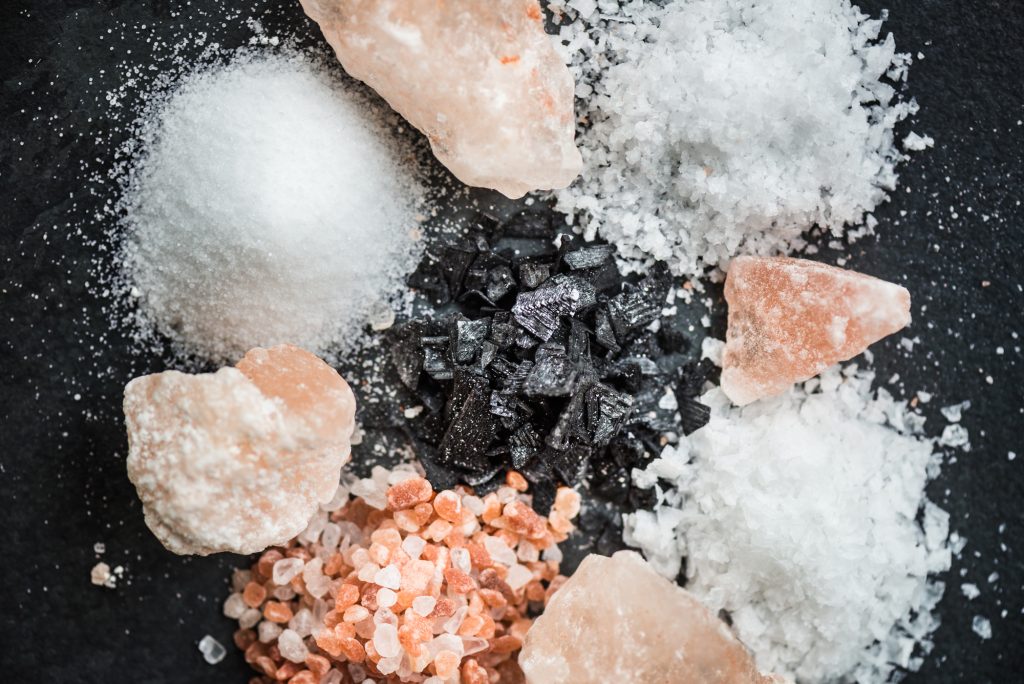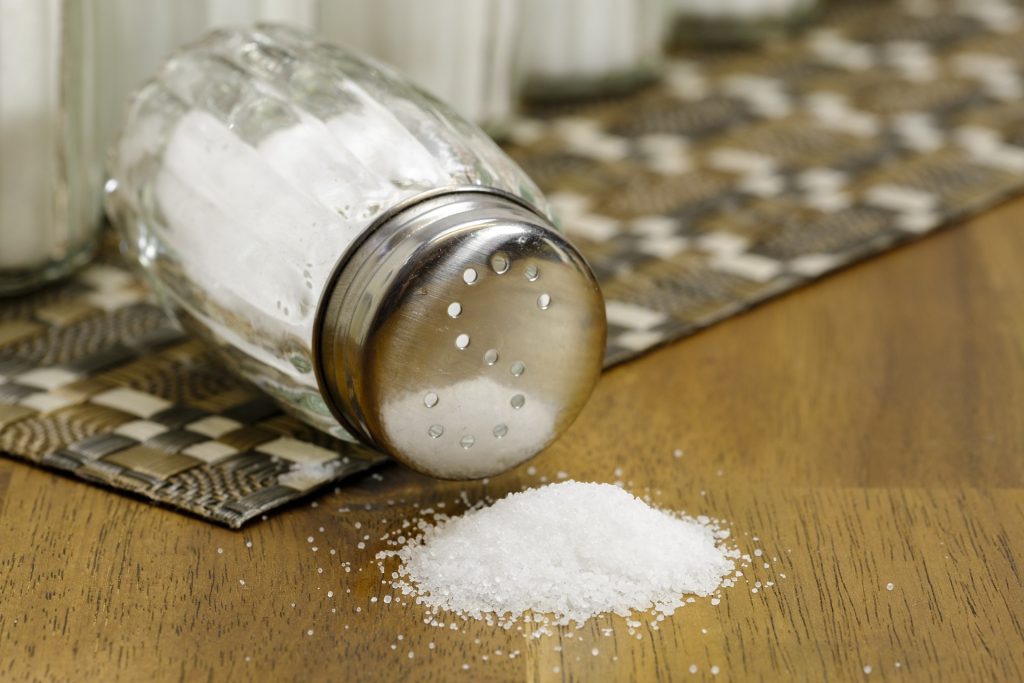One of the pitfalls of cooking is the recommendation to salt to taste. Have you ever put your heart and soul into a dish and the first thing you do before you serve it to someone is to salt it well? This is not something to be discouraged about, as it is a bad habit and does not qualify the cook.
When salting, and salting to taste, you should also be aware that salt does not just add salt to food. Salt also affects the flavors and aromas. Salt brings out the sweet flavors and reduces the bitterness. In unsalted food, the unpleasant flavors are intensified, while the pleasant flavors are left more uncharacteristic.
When salting, it is not only the quality and quantity of salt that matters but also when you salt your food. Often, salting should be done just before serving to release the flavors (for example, tomato salad).
Basically, you need to keep an eye on the flavor of the food while cooking. Salting is not enough to do once, you need to taste as you cook. A well-salted dish is not salty, yet you can taste the salt in every bite and ingredient.
The effects of salting
Cooking is largely chemistry. While you don’t need to be a chemistry professor, it’s a good idea to have some basic information about cooking techniques.
There are cooking techniques and ingredients that require salting to last long enough for the salt to penetrate and dissolve in an ingredient. In other cases, it is a matter of creating a sufficiently salty environment so that the food can absorb the right amount of salt during cooking.
If done right, salt always flavors the food evenly from the inside, but it affects the texture of different foods in different ways.

Salting of meat
The best way to flavour meat is to salt it in advance. This allows enough time for the salt to infiltrate the meat evenly. The important thing here is that this process takes long enough.
It is not true that pre-salting will toughen and dry out the food. Over time, the salt will dissolve the protein fibers into a gel consistency, allowing them to absorb and retain water better during cooking. This in turn makes the meat tender and soft.
This is why marinating works well. In the marinade, the salt dissolves some of the proteins and the flavor of the spices in the marinade is absorbed by the meat. Lean meats and poultry can therefore be prepared well by bringing in liquid. An overnight soak in a salty, spicy brine also does wonders for flavorless chicken and turkey.
How long before you salt the meat?
The denser and more tender the meat, the earlier it should be salted. Beef shanks and ribs can be brined a day or two earlier. Chicken for roasting can be salted one day before roasting, larger poultry such as whole turkeys up to three days.
It is best to brine and marinate the meat at least one day in advance. This is also good because you only need to take the prepared food out of the fridge before using it. This saves a lot of time just before cooking.
Ambient temperature also affects the efficiency of pre-cooking. If you are short of time or have forgotten to pre-salt the meat, you can leave it at room temperature on the kitchen counter for up to two hours.
If you have pre-salted fresh meat and then never prepared it, freeze it instead. It’s also not a good idea to leave the meat in the salt for too long, as the salt will actually take the water out of the meat over a long period of time. Think of ancient meat curing techniques. But never re-freeze meat once it has been frozen!
Lean meat is better salted because it has a higher protein and water content. Fattier meats absorb less salt and less evenly.
If you are cooking meat in a liquid, such as soup, salt it in advance, but salt the cooking liquid more carefully.
Salting fish and eggs
The more delicate proteins in fish break down more easily if you salt them too early. They become really dry and chewy. Salting 15 minutes before use will be fine. For thicker fish slices, salt 30 minutes earlier. Only sprinkle seafood with salt during cooking.
Eggs absorb salt easily. Add the salt for scrambled eggs, omelets, and frittatas to the eggs before using. For hard-boiled and fried eggs, add salt only before serving.
Salting vegetables and fruit
Salt softens the fibrous cell walls of vegetables and fruit. They will also taste better after proper salting.
It is usually enough to salt vegetables 15 minutes before cooking. When pan frying, put the vegetables and salt in the pan at the same time. If you want to cook vegetables in water or if you are going to blanch them, salt the water thoroughly and then add the vegetables.
Salt vegetables with a high moisture content (tomatoes, courgettes, aubergines) before grilling, but wipe them dry before cooking. Salt mushrooms when they start to brown in the pan.
Fresh salads can be salted with a pinch of special textured sea salt before serving.
Salting pulses, grains, and potatoes
Add salt to the soaking and cooking water of pulses, then cook them slowly.
The cooking water for cereals needs less salt than the blanching water for vegetables. It will taste good if it tastes like swallowing seawater.
For these foods, salt the cooking water as early as possible, as this is the only way to flavor the food from the inside.
Salting pasta
You do not need to add salt to homemade dry pasta. However, the cooking water for pasta needs salt and should be set to seawater consistency. Always add salt early to bread dough, and mix it thoroughly into the batter of cakes and pancakes later.
Salt layering
If you don’t use just one type of salt when preparing food, you are layering salt. You have several types of salty food to achieve the depth of flavors and aromas you want.
The
salted Sardella, the capers in salt, pickles, fermented vegetables,
soy sauce,
fish sauces,
cheeses,
mustard,
ketchup,
cured meats,
algae,
olives and
salted butter also adds salt to food. So when using these as a base ingredient, consider all salty ingredients when salting.
Saving salted food
The classic is to add rice or potatoes to a salted soup. However, you can also halve the salted dish and only enhance one portion by diluting it. You can freeze the rest, which you can also enhance with the dilution when it comes time to serve it.
You might just need to balance the food with a little acid (a few drops of lemon juice or vinegar), or perhaps a little fat (such as olive oil). Try a small amount first, and then if it stands the test of tasting, put some of the new flavoring in the whole thing.
If your cooking water becomes too salty, you can simply pour it off and replace it. If you have salted your stew, serve it without the stock and serve it with a lightly salted starchy garnish or vegetable.
If you’ve salted the meat too much, chop it up and use it as an ingredient in something. For example, use it to make casseroles or soups, meatballs, and stuffing.
Feel free to experiment! Try everything at every stage of cooking!
Last updated: September 24, 2023


